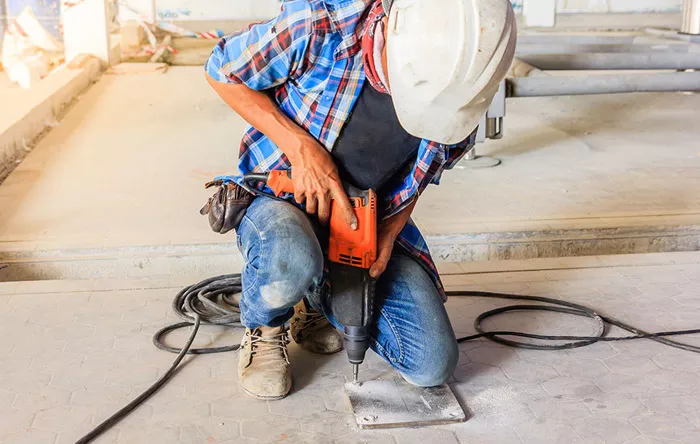A power punch tool is a specialized device designed to create holes or indentations in various materials using mechanical force. These tools come in different forms, from small handheld units to large industrial machines, each serving specific purposes across multiple industries.
The basic function of a power punch tool involves applying concentrated force to penetrate or deform material. This force can be generated through different mechanisms including hydraulic systems, pneumatic (air-powered) systems, or electric motors. The choice of mechanism depends on factors like required precision, material thickness, and production volume.
Types of Power Punch Tools
Handheld Power Punch Tools
Portable handheld models are ideal for smaller jobs or situations requiring mobility. For example, the PowerPunchTM is a heavy-duty hand-held unit capable of cutting clean holes in thick banner material up to 4.5mm thick. Its compact size and lightweight design make it completely portable and significantly lower in cost than benchtop grommet presses.
Industrial Power Press Machines
Industrial power punch tools take the form of large press machines. These high-speed precision machines convert circular motion to linear motion through a system of gears, crankshafts, and connecting rods. The main motor drives a flywheel, which then transfers energy to create the punching action.
Office and Light-Duty Power Punches
For office environments, power punch tools like the Power Stone Paper Puncher offer high-performance hole punching capabilities. These devices are designed for heavy-duty use in businesses, capable of punching multiple sheets at once with adjustable punching capacity for various document sizes.
How Power Punch Tools Work
The basic operation involves three main components:
The Punch: The upper part that applies the force
The Die: The lower part that supports the material
The Stripper: Holds the material in place during punching
When activated, the punch descends with significant force, shearing the material against the die. More advanced systems may incorporate features like automatic lubrication, water cooling systems, and programmable depth control.
Applications Across Industries
Power punch tools serve diverse applications:
Manufacturing Sector
Essential for creating precision components in automotive parts, electronics, and machinery. They can produce everything from simple holes to complex shapes in metal sheets.
Construction Industry
Used for creating holes in structural steel, ductwork, and other building materials. The ability to quickly produce accurate holes improves efficiency on job sites.
Signage and Banner Production
Specialized power punches create clean holes for grommets and fasteners in banner materials.
Office and Paper Processing
Streamline document organization by creating consistent holes for binding and filing systems.
Key Selection Factors
When choosing a power punch tool, consider:
Material Compatibility
Different tools are designed for specific materials including metals, plastics, paper products, and fabrics.
Thickness Capacity
Handheld models typically handle thinner materials while industrial presses can punch through much thicker substances.
Power Source Options
Tools may use electric motors, pneumatic systems, hydraulic systems, or manual operation.
Safety Features
Important considerations include emergency stop mechanisms, protective guards, and overload protection systems.
Maintenance Requirements
Proper maintenance ensures longevity and performance:
Regular Lubrication
Many tools feature automatic systems, but manual lubrication may be required for some models.
Component Inspection
Regularly check punches and dies for wear, proper alignment, and sharpness of cutting edges.
Cleaning Procedures
Remove debris to prevent jamming, inaccurate punching, and premature wear.
Safety Considerations
Working with power punch tools requires strict safety protocols:
Personal Protective Equipment
Always wear appropriate safety glasses, gloves, and protective footwear.
Machine Safeguards
Ensure all safety features like emergency stops and protective barriers are functional.
Operator Training
Thorough training should cover correct operation procedures and emergency protocols.
Technological Advancements
Modern power punch tools incorporate advanced technologies:
Computer Numerical Control
Allows for programmable punching patterns and automated operation.
Servo-Electric Drives
Offer energy efficiency and precise speed control.
Smart Monitoring Systems
Provide real-time performance data and predictive maintenance alerts.
Future Trends
The industry continues to evolve with trends including:
Increased Automation
More robotic integration and advanced material handling systems.
Energy Efficiency
Focus on reduced power consumption and eco-friendly designs.
Enhanced Connectivity
Growing capabilities in remote monitoring and data analytics.
Conclusion
Power punch tools represent a versatile category of equipment serving numerous industries. From small handheld devices to industrial presses, these tools provide efficient solutions for creating holes and shapes in various materials. Understanding the different types and their applications helps users select appropriate tools while ensuring safe operation.
As technology advances, power punch tools continue to evolve, offering greater precision and efficiency. Whether for industrial manufacturing or office tasks, these tools remain essential for professionals needing reliable hole-making capabilities.
Related Topics:

